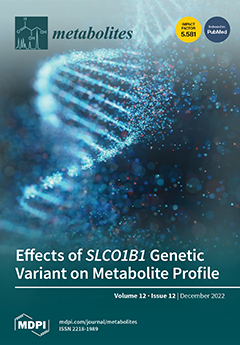Oxidative stress plays a leading role in the pathogenesis of diabetic nephropathy. However, many aspects of oxidative stress reactions in the initial stages of this disease are not fully understood. The men cohort is of particular interest because of the severe effects of diabetes on their urogenital system. The aim of this study is to assess the intensity of lipids, proteins, DNA oxidative damage, blood antioxidant defense enzymatic, and activity of non-enzymatic components in men with type 1 diabetes mellitus (T1DM) in the early stages of diabetic nephropathy using receiver operator characteristic (ROC) analysis. This study included eighty-nine reproductive-age men in the initial stages of diabetic nephropathy (DN) and thirty-nine age- and sex-matched individuals not suffering from glycemic disorders. The DN patients were divided into two subgroups: stage 1 patients (urinary albumin < 30 mg/day and albumin/creatinine ratio < 3 mg/mmol (
n = 45)) and stage 2 patients (urinary albumin 30–300 mg/day and albumin/creatinine ratio 3–30 mg/mmol (
n = 44)). Levels of oxidative damage products (conjugated dienes (CDs), thiobarbituric acid reactants (TBARs), methylglyoxal (MGO), and 8-hydroxy-2’-deoxyguanosine (8-OHdG)) and antioxidants (glutathione peroxidase (GPx), glutathione S-transferases π (GSTp), glutathione reductase (GR), copper and zinc-containing superoxide dismutase 1 (SOD-1), total antioxidant status (TAS), α-tocopherol, retinol, reduced glutathione (GSH), and oxidative glutathione (GSSG)) were estimated in plasma and erythrocytes. Oxidative damage to cellular structures (higher values of median CDs (1.68 µmol/L;
p = 0.003), MGO (3.38 mg/L;
p < 0.001) in the stage 1 group and CDs (2.28 µmol/L;
p < 0.0001), MGO (3.52 mg/L;
p < 0.001), 8-OHdG (19.44 ng/mL;
p = 0.010) in the stage 2 group) and changes in the antioxidant defense system (lower values of TAS (1.14 units;
p = 0.011), α-tocopherol (12.17 µmol/L;
p = 0.009), GPx (1099 units;
p = 0.0003) and elevated levels of retinol (1.35 µmol/L;
p < 0.001) in the group with stage 1; lower values of α-tocopherol (12.65 µmol/L;
p = 0.033), GPx (1029.7 units;
p = 0.0001) and increased levels of GR (292.75 units;
p < 0.001), GSH (2.54 mmol/L;
p = 0.010), GSSG (2.31 mmol/L;
p < 0.0001), and retinol (0.81 µmol/L;
p = 0.005) in the stage 2 group) were identified. The ROC analysis established that the following indicators have the highest diagnostic significance for stage 1 diabetic nephropathy: CDs (AUC 0.755;
p < 0.0001), TBARs (AUC 0.748;
p = 0.0001), MGO (AUC 0.720;
p = 0.0033), retinol (AUC 0.932;
p < 0.0001), GPx (AUC 0.741;
p = 0.0004), α-tocopherol (AUC 0.683;
p = 0.0071), and TAS (AUC 0.686;
p = 0.0052) and the following for stage 2 diabetic nephropathy: CDs (AUC 0.714;
p = 0.001), TBARs (AUC 0.708;
p = 0.001), 8-OHdG (AUC 0.658;
p = 0.0232), GSSG (AUC 0.714;
p = 0.001), and GSH (AUC 0.667;
p = 0.0108). We conclude that changes in indicators of damage to lipids, proteins, DNA, and the insufficiency of antioxidant defense factors already manifest in the first stage of diabetic nephropathy in men with T1DM. The ROC established which parameters have the greatest diagnostic significance for stages 1 and 2 of diabetic nephropathy, which may be utilized as additional criteria for defining men with T1DM as being in the risk group for the development of initial manifestations of the disease and thus allow for substantiating appropriate approaches to optimize preventive measures.
Full article






